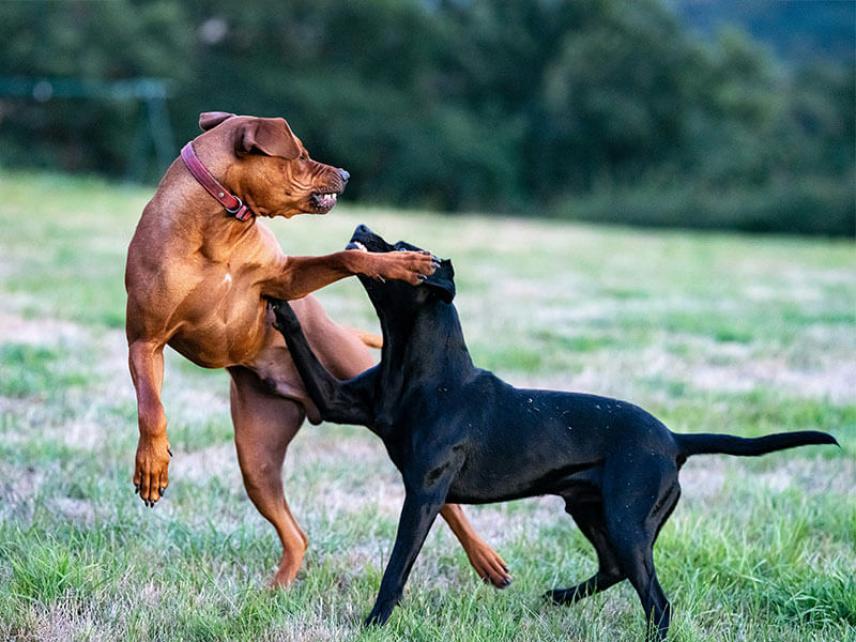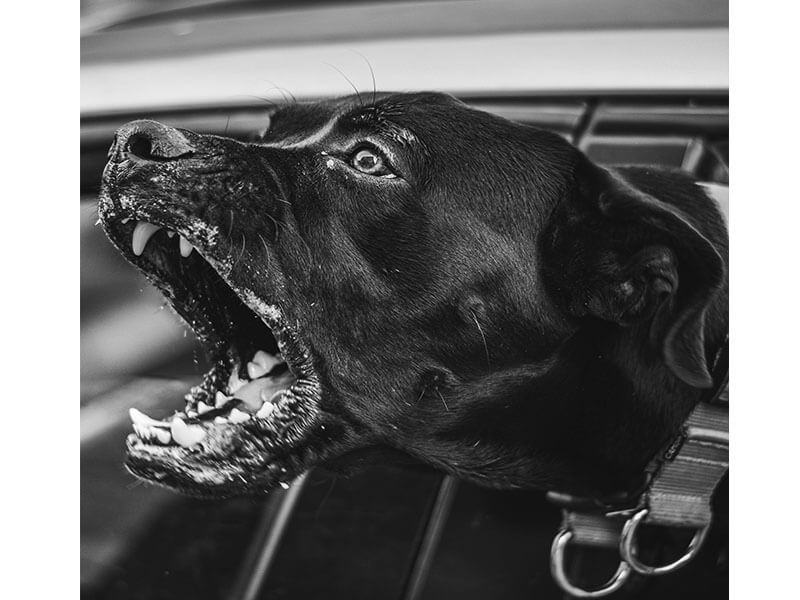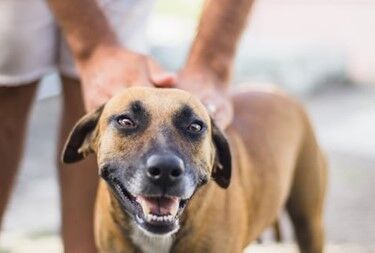The number of registered
animals is growing every day
Published: Oct 15, 2024

Aggressive dog behavior is often a huge challenge for owners of unruly pets. Dealing with a dog with an uncontrollable temperament, who shows aggression towards people and animals, requires a great deal of commitment from both sides in building a healthy relationship and controlling dangerous behaviors, which must be eliminated for the sake of the dog and society. Does dog aggression have anything to do with breed? What to do with an aggressive dog and where to seek help?
Is an aggressive dog born that way? Definitely not! Of course, it's essential to consider that every dog has a different level of patience, susceptibility to irritation, and reactions to provoking situations and behaviors. While genetic predispositions can shape a dog's behavior, in many circumstances, the main "trigger" is the owner. The owner is responsible for raising the dog in a way that allows coexistence based on mutual rules and principles. You also cannot claim that dog aggression towards the owner, towards family members, or others is solely caused by the dog's own character and genetic predispositions.

What to do when a dog is aggressive towards the owner, children, or animals? How to deal with aggressive dogs? Training with the help of a behaviorist is the best solution. However, at the very beginning, you should expect many questions about how you handle the dog, how you behave in its presence, and how you respond to its aggressive reactions. What forms of aggression are most commonly encountered?
1. Dog aggression towards the owner
2. Dog aggression towards family members
3. Dog aggression towards children
4. Dog aggression towards other dogs
There are many situations and circumstances that can make your pet start behaving like an aggressive dog. What to do to eliminate the dangerous reactions in various forms?
1. Make sure the dog is not ill, in pain, or suffering from unseen conditions.
2. Pay attention to the “triggers.” When does the dog start growling, baring its teeth, staying tense, or attacking and biting?
3. What might cause negative associations, fear, or defensive reactions?
4. When does the dog feel uncomfortable and lose confidence?

Unfortunately, finding the cause of dog aggression is not always easy and quick. Often, it's necessary to dig deeper into the dog's behavior, psychology, and even past, especially if the dog has been mistreated, abused, or spent most of its life in a shelter. When and how does aggressive behavior usually manifest in a dog?
Dog aggression during play begins when the dog tries to show dominance over other members of the pack, preventing others from accessing their favorite toy or another object.
Some human behaviors signal to the dog that it should defend its bowl. When a person approaches the bowl, the dog may start growling and barking. It feels insecure, lacks trust in the owner, and fears its property will be taken away.
The vaccination itself, the visit to the vet, and the clinic filled with the scents of other animals can make the dog feel uneasy and insecure, which can lead to aggression toward both the owner and the doctor. After the vaccination, the dog may feel weak and irritable. Lack of rest and constant exposure to stimuli can trigger aggression.
Do you already know when your dog reacts aggressively? If so, follow these guidelines to make sure your pet feels safe, trusts you, and considers you a source of support.
1. Take your dog to a training session with a behaviorist!
2. Avoid situations where the dog reacts aggressively!
3. During training and exposure to triggers, put a muzzle on the dog!
4. Step back when the dog’s body language shows high tension!
5. Stay confident and calm, as the dog can sense your emotions!
6. Use positive reinforcement (e.g., treats) to divert the dog's attention from triggers!
Dog aggression after sterilization or neutering largely depends on hormonal factors. In the case of neutering, testosterone levels decrease, which may result in reduced aggressive behavior in male dogs.
The situation is more complicated for females. Sterilization should not be performed earlier than three months after the end of the heat cycle. During the heat cycle, females experience high levels of progesterone, which can cause irritation and fear. A sudden drop in this hormone can contribute to unwanted behaviors.
Other dogs usually attack out of dominance, trauma, fear, or territorial defense. If you find yourself in a situation where another dog shows aggression towards your pet, your dog may engage in a fight, freeze, or attempt to flee. This is one of the reasons why it's worth considering a microchip for your dog. It's important to remember that the chip itself is not enough - you need to complete the dog chip registration, which ensures that linking a lost dog with its owner in the Central Dog Registry will go smoothly and without issues!
During training, it's important to stay calm. If you struggle to control your emotions or your attachment to the animal makes it difficult for you to remain patient during training, consider seeking help from a professional behaviorist. With their help, both your thinking and behavior, as well as your dog's behavior, can improve gradually but noticeably.
No, aggression in dogs is not directly related to their breed. While some breeds may have genetic predispositions influencing their temperament, the main factor shaping a dog's behavior is its upbringing and life experiences.



Marking animals with a microchip is the most durable, effective and completely safe method of quick and reliable identification. Every transponder (chip) has a unique number which enables instant identification of the animal and its owner, helping them reunite faster. However, it is important to remember that a chip is just a transponder with an encoded number. It is not a tracking device and contains no data about the animal or the owner! Therefore, in order to identify a chipped dog or cat, it is necessary that a microchip be registered in a national marked animal database...
Read moreIn today's world, responsibility for animal care has become not only a priority for their owners but also a societal issue. One of the most important tools in ensuring animal safety is the chip database. It allows for the quick and efficient recovery of lost pets, which is crucial for protecting their health and well-being.
The introduction of microchipping has significantly improved the effectiveness of efforts to locate lost animals, reducing stress for both owners and their four-legged friends. Registration in the chip database is increasingly required by local regulations, further highlighting the importance of this technology in ensuring comprehensive care for animals.